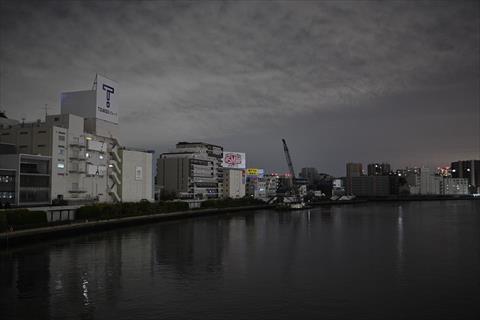You are here
Japan marks 10 years since worst natural disaster
Mar 10,2021 - Last updated at Mar 10,2021

This combination of photos, created on March 4, shows local residents (top) looking at debris brought by the huge tsunami in Minamisoma, Fukushima prefecture on March 12, 2011; and the same area (bottom) nearly 10 years later, on January 25 (AFP photo)
By Sara Hussein
Agence France-Presse
TOKYO — Japan this month marks 10 years since the worst natural disaster in the country's living memory — the massive earthquake, deadly tsunami and nuclear meltdown of March 11, 2011.
The scale of the devastation is difficult to capture, but here are some figures that help paint a picture.
9.0 magnitude quake
The undersea quake that struck at 2.46 pm local time on March 11 measured magnitude 9.0 and was one of the most powerful quakes ever recorded.
It hit at a depth of around 24 kilometres, roughly 130 kilometres east of Japan's Miyagi prefecture, and produced violent shaking throughout much of the country.
It was so powerful that it moved Japan's main Honshu island 2.4 metres east and may even have shifted the Earth itself on its axis.
9.3 metre waves
The quake triggered a tsunami wave that began arriving on Japan's coast around 30 minutes later.
The highest tsunami wave measured by Japan's weather bureau was 9.3 metres in Fukushima's Soma, but the water rose significantly higher in many places where monitors could not capture measurements.
In the city of Ofunato, for example, forecasters retroactively calculated that water reached 16.7 metres, based on traces left on buildings.
In other places it rose even higher as it travelled up inclines and pressed up against seawalls before topping them.
The waves hit with such force that homes were destroyed right down to their foundations in many places, leaving areas that were once thriving communities almost entirely featureless.
18,426 people dead or missing
Almost all the deaths in the disaster were caused in the tsunami, and the toll was staggering.
As of December 2020, the number of confirmed deaths stood at 15,899, with another 2,527 people missing and presumed to have been killed, according to Japan's national police agency.
More than 6,000 people were injured, and others died during the evacuation or later.
Deaths were recorded in multiple prefectures, but the majority were in three regions: Fukushima, Miyagi and Iwate.
3 nuclear reactors in meltdown
The tsunami not only brought a wave of death and destruction but also overwhelmed the cooling systems at the Fukushima Daiichi nuclear plant, eventually sending three of its six reactors into meltdown.
Four reactors, including one that was not operational at the time of the quake, were damaged, and explosions ravaged reactors one and three.
A decade later, the decommissioning of Fukushima is still moving slowly, with the entire process expected to take decades.
Challenges include disposing of a growing amount of water contaminated by radiation. Once put through a filtration process, most radioactive elements are removed, but releasing the water into the sea — as recommended by some officials — remains a controversial option.
20 kilometre evacuation zone
The crisis at the Fukushima plant forced the government to declare an evacuation zone in a 20 kilometre radius from the site. Those living within the zone were ordered to evacuate, but many living outside the region decided to do so voluntarily.
Fukushima prefecture counts the number of evacuees by grouping together both those who were ordered to leave and those who chose to do so, and puts the total figure at 164,865 evacuees in 2012, the first year for which data is available.
As of 2020, the number of remaining evacuees — again grouping those who left by choice and those ordered to do so — stood at 36,811.
2.4 per cent of Fukushima no-go
When the exclusion zone was originally declared after the nuclear accident, it covered around 12 per cent of Fukushima prefecture.
In the past decade, the government has undertaken an extensive de-contamination programme, literally scraping layers of topsoil among other methods to remove radiation.
It has gradually declared areas safe for residents to return, with just 2.4 per cent of the prefecture still covered by no-go orders.
But in some places, evacuees have been reluctant to return even after measures are lifted, worried about persistent radiation or fully resettled in other places.
430 kilometres of seawall
Seawalls were a common feature in Japan even before the deadly tsunami, but the disaster prompted a move to erect more, and higher barriers.
In all, 430 kilometres of seawall will eventually be constructed, or reconstructed in the three worst affected prefectures — Fukushima, Miyagi and Iwate.
The walls, which are not continuous but run for hundreds of metres in some places, were 80 per cent complete by last September, and the project has a budget of around $12 billion.
Related Articles
Japan observed a moment of silence Tuesday to mark the third anniversary of the quake-tsunami disaster which swept away thousands of victims, destroyed coastal communities, and sparked the nuclear emergency that forced a re-think on atomic power.
TOKYO — A powerful 7.3-magnitude quake jolted eastern Japan on Wednesday night, rattling the capital Tokyo and prompting a tsunami advisory
TOKYO — A 6.8-magnitude earthquake struck off southwestern Japan late on Monday, causing small tsunamis in the area but no major damage was













